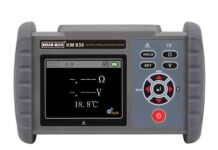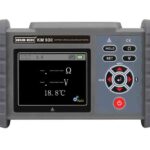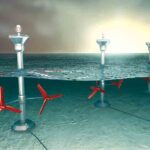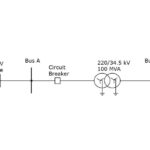
Basically Linear & Non-linear types of loads are being extensively used in any electrical load scenario. Linear load is defined as whose impedance is constant throughout its applied voltage cycle. Resistive, inductive & capacitive loads are coming under linear category. Whereas, non-linear load is defined as whose impedance is continuously varying to its applied voltage cycle. SMPS, electronic equipment, SCR/IGBT devices, UPS systems etc are coming under non-linear category. However, harmonics are distortion of the normal electrical current waveform, generally transmitted by nonlinear loads that draw a non sinusoidal current from a sinusoidal voltage source. A harmonic current increases power system heat losses, reduces system efficiency. Harmonic currents can have a significant impact on electrical distribution systems and the facilities they feed.
Switch-mode power supplies (SMPS), variable speed motors and drives, photocopiers, personal computers, laser printers, fax machines, battery chargers and UPSs are examples of nonlinear loads. Single-phase non-linear loads are prevalent in modern office buildings, while three-phase, non-linear loads are widespread in factories and industrial plants. Harmonics should not be confused with spikes, dips, impulses, oscillations or other forms of transients.
Power system harmonics is an area that is receiving a great deal of attention recently. The increase in proportion of non-linear load has prompted more stringent recommendations (IEEE Std. 519 & IEC61000-4-7) and stricter limits imposed by utilities.
Sine waves are symmetric about origin. Figure 1 shows various harmonic contents like 3rd, 5th & 7th & the resultant yellow colour appears to be square wave. A square wave is actually combination of infinite series of sine wave harmonics, added together.
Harmonic Effects
All computer systems use SMPS that convert utility AC voltage to regulated low-voltage DC for internal electronics. These non-linear power supplies draw current in high-amplitude short pulses that create significant distortion in the electrical current and voltage wave shape—harmonic distortion, measured as total harmonic distortion (THD). The distortion travels back into the power source and can affect other equipment connected to the same source. Most power systems can accommodate a certain level of harmonic currents but will experience problems when harmonics become a significant component of the overall load. As these higher frequency harmonic currents flow through the power system, it will be having following effects:
• Large load currents in the neutral wires of a 3 phase system.
• High neutral-to-ground voltage often greater than 2 volts
• communication errors, overheating and hardware damage
• Overheating of electrical distribution equipment, cables, transformers, standby generators, etc.
• High voltages and circulating currents caused by harmonic resonance
• Generator Hunting
• Electronic Control Clock errors
• Quivering Monitors and CRT displays
• Equipment malfunctions due to excessive voltage distortion
• Nuisance tripping of circuit breakers
• Metering errors needs true metering
• zero-crossing noise
• skin effect
• Reducing system power factor, resulting in penalties on monthly utility bills overloading of neutrals

Figure 1: Harmonic waveform from fundamental -7th & resultant
Basic Theory
The analysis of harmonics is the process of calculating the magnitudes and phases of the fundamental and high order harmonics of the periodic waveforms The Fourier’s theorem states that every non-sinusoidal periodic wave can be decomposed as the sum of sine waves through the application of the Fourier series. The resulting series is known as Fourier series. It establishes a relation between a function in the domain of time and a function in the domain of frequency.
Harmonics are a mathematical way of describing distortion to a voltage or current waveform. The term harmonic refers to a component of a waveform that occurs at an integer multiple of the fundamental frequency. The function f(x) = sin x is an odd function. That is, it is symmetrical about the origin. We have: sin(-x) = -sin(x)
The function f(x) = cos x is an even function. That is, it is symmetrical about the vertical axis. We have: cos(-x) = cos(x)
If the function is odd then cosine term disappears. If the function is even the Sine term vanishes from expression. For our analysis Sine terms are only considered in the expression.
Fourier theory tells us that any repetitive waveform can be defined in terms of summing sinusoidal waveforms which are integer multiples (or harmonics) of the fundamental frequency. For the purpose of a steady state waveform with equal positive and negative half-cycles, the Fourier series can be expressed as follows:
![]()


f(t) is the time domain function
n is the harmonic number (only odd values of n are required)
an & bn are the coefficients of individual nth harmonic component
T is the length of one cycle in seconds
THD (Total Harmonic Distortion)
A common term that is used in relation to harmonics is THD or Total Harmonic Distortion. THD is a term used to describe the net deviation of non-linear waveform from ideal sine waveform. Total Harmonic Distortion is the ratio between the RMS values of the harmonics and the RMS value of fundamental. THD can be used to describe voltage or current distortion and is calculated as follows:

The following equation allows determination of the characteristic harmonics for a given pulse number:
h = kq ±1
where h is the harmonic number (integer multiple of the fundamental k is any positive integer q is the pulse number of the converter
This means that a 6-pulse (or 3-phase) rectifier will exhibit harmonics at the 5th, 7th, 11th, 13th, 17th, 19th, 23rd, 25th, etc. multiples of the fundamental. As a rough rule of thumb, the magnitudes of the harmonic currents will be the fundamental current divided by the harmonic number (e.g. the magnitude of the 5th harmonic would be about 1/5th of the fundamental current). A 12-pulse (or 6-phase rectifier) will, in theory, produce harmonic currents at the 11th, 13th, 23rd, 25th, etc. multiples. In reality, a small amount of the 5th, 7th, 17th and 19th harmonics will be present with a 12-pulse system (typically the magnitudes will be on the order of about 10 percent of those for a 6-pulse drive).
ODD & EVEN Harmonics
As name implies that odd harmonics have odd numbers (e.g 3,5,7,9,11,13) & even harmonics have odd numbers (e.g 2,4.6.8,10).Harmonic number 1 is represented to the fundamental frequency component of periodic wave. Harmonic number 0 is the constant or DC component of the waveform. DC component is the net difference between positive & negative halves of complete waveform cycle. Even harmonics cancels out & majority of non-linear loads produce odd harmonics. Uneven current draw between the positive & negative halves of one cycle of operation can generate even harmonics.

Figure 2: voltage & current waveform having non- linearity in nature
Measurement with Fluke-1750 Power Recorder
The Figure 2 shows the voltage & current waveform having non- linearity in nature recorded at one of our site. Figure 3 shows CF, DPF KW, KVA ,KVAR,VTHD & ITHD & k factor. These parameters signify the percentage of non-linearity of Waveform & helps in analysis of Harmonic loads.

Figure 3: Harmonic current waveform with K factormeasured by Fluke 435 PQA
Harmonics K-factor
A standard transformer is not designed for high harmonic currents produced by non-linearloads. It will overheat and fail prematurely when connected to these loads. When harmonics were introduced into electrical systems at levels that showed detrimental effects are catered by K-rated transformer.
K-rated transformers are not used to handle harmonics, but they can handle the heat generated by harmonic currents and are very efficient when used under their K-factor value. K-factor ratings range between 1 and 50. A standard transformer designed for linear loads is said to have a K-factor of 1. The higher the K-factor, the more heat from harmonic currents the transformer is able to handle. Making the right selection of K-factor is very important, because it affects cost and safety. The table shows appropriate K-factor ratings to use for different percentages of non-linear current in the electrical system.

Figure 4: Power Vector Relationship (Non-Linear Loads)
Power Factor for Non-Linear Loads
P = Active Power in kW
Q = Reactive Power in kVAR
S = Apparent Power in kVA
For non-linear loads, the power vector relationship becomes three dimensional with distortion reactive power, H, combining with both Q and P to produce the apparent power which the power system must deliver. Power factor remains the ratio of kW to kVA but the kVA now has a harmonic component as well. True power factor (TPF) becomes the combination of displacement power factor (dPF) and distortion power factor (hPF). Displacement PF is still equal to CosΦ, with Φ being the angle between the fundamental current and voltage. Displacement PF can be either leading or lagging. Distortion PF is then true PF (kW/kVA) divided by the dPF. Distortion PF is neither leading nor lagging. For typical non-linear loads, the displacement power factor will be near unity. True power factor, however, is normally very low because of the distortion component. For example, the displacement power factor of a variable speed drive will be near unity but its total power factor is often in the 0.7 – 0.8 range unless harmonic mitigation equipment is applied.
Today, with the heavy proliferation of non-linear loads, low power factor on a power system is often the result of a high distortion reactive power component and not inductive reactive power. Therefore, one can no longer say that low power factor is normally caused by electric motors and other inductive loads. And since the best way to improve a poor power factor caused by non-linear loads is to remove the harmonic currents.

Figure 5: Unbalanced 3 phase Systems with sequence
Harmonic Input Current Waveforms of Different Non-Linear Loads

Figure 6: Input current Waveform of Non-linear loads
Harmonic Effects on Phase sequence
In a balanced system, voltage harmonics can either be positive, negative or zero sequencing values. This means that the voltage at that particular frequency tries to rotate the motor forward, backward, or neither (just heats up the motor), respectively. There is also heating from increased losses as in a transformer. Harmonic Sequencing Values in Balanced Systems:

Figure 7: Harmonic mitigation by Active Filter
Table 1: Positive, negative & zero Sequence

Electrical distribution systems for harmonics
These are recommended ways to wire for the harmful effects that harmonics cause. However, these recommendations only keep the electrical distribution systems safe. These wiring recommendations do not eliminate or cancel high levels of harmonics.
• Double-size neutral wires or separate neutrals for each phase.
• Dedicated full-size insulated ground wire instead of conduit alone as a return ground path
• Use an isolated ground wire for sensitive electronic and computer equipment.
• Segregate sensitive electronic and computer loads on separate branch circuits all the way back to the electrical panel.
• Installation of comprehensive exterior copper ground ring and multiple deep driven ground rods as part of the grounding system to achieve 5 ohms or less resistance to earth ground.
• Oversize phase wires to minimize voltage drop on branch circuits.
• Shorten the distance on branch circuits from the power panel to minimize voltage drop.
Mitigation of Harmonics
In order to ensure the highest Power Quality for your building or facility, it is necessary to treat harmonics. Harmonic treatment can be performed by two methods: filtering or cancellation. A harmonic filter consists of a capacitor bank and an induction coil. The filter is designed or tuned to the predetermined non-linear load and to filter a predetermined harmonic frequency range. Usually this frequency range only accounts for one harmonic frequency. This application is mostly used when specified for a UPS or variable frequency drive motor in a manufacturing plant.
Harmonic cancellation is performed with harmonic cancelling transformers also known as phase-shifting transformers. A harmonic Cancelling transformer is a relatively new power quality product for mitigating harmonic problems in electrical distribution systems. This type of transformer has patented built-in electromagnetics technology designed to remove high neutral current and the most harmful harmonics from the 3rd through 21st. The technique used in these transformers is call “low zero phase sequencing and phase shifting”. These transformers can be used to treat existing harmonics in buildings or facilities. This same application can be designed into new construction to prevent future harmonics problems.
Minimising Harmonic Issues
1. Over sizing & Separate Neutral Conductors: In three phase circuits with shared neutrals, it is common to oversize the neutral conductor up to 200% when the load served consists of non-linear loads. Also, by running separate neutral conductors for each phase conductor. This increases the copper use by 33% & successfully eliminates the addition of the harmonic currents on the branch circuit.
2. Oversizing Transformers and Generators: Due to harmonic currents, total current increases resulting thermal capacity of transformers and generators should be increased. Oversizing is taken into consideration.
3. Active Filters & PF Control: Latest technology to eliminate harmonic injected into the mains supply by non linear loads, as well supplies inductive power demanded by the load, so as to correct input power factor to near unity. The use of active harmonic filters (AHF), power quality devices that permanently monitor the non-linear load and dynamically provide precisely controlled current, helping to prevent distortion in a power network. This current has the same amplitude of the harmonic current but is injected in the opposite phase-shift, canceling out the harmonic currents in the electrical system. As a result, the current supplied by the power source will remain sinusoidal since the harmonics will cancel each other, and the harmonic distortion is reduced to less than 5% THDi, meeting all standards.
This and the reactive current signal, together are used to generate a reference for the controlled current source connected at the PCC (point of common connection) of source and load. This results in mains supplying only real power for the load and reactive &harmonics being sourced from the Active Filter.This is carried out dynamically,so that any change in the load pattern or its nature is immediately responded without any manual intervention.
As shown in figure 7, the harmonics are being generated by the load side is mitigated by AHF with 180° phase opposition harmonic order of same magnitude having clean feeder current source.
4. Passive filters: Passive filters are combination of L & C, designed to tune a particular frequency of harmonics .Passive filters are used to provide a low impedance path for harmonic currents so that they flow in the filter and not the supply.
5. Isolation Transformers: Triple-N currents circulate in the delta windings of transformers The same effect can be obtained by using a ‘zig-zag’ wound transformer.
6. K-Rated Transformers: Special transformers have been developed to accommodate the additional heating caused by these harmonic currents.
7. True RMS Metering: New “true RMS” meters will sense current up to the kilohertz range. These meters should be used to detect harmonic currents & will give actual reading of harmonic content.
8. Series Reactor: It can be connected in series with Non-linear Loads & harmonics can be minimized.
Conclusion
The way modern power electronic devices are coming up, the harmonic effects & solution for mitigation technique needs to be thought of in our present power system scenario & needs to be reviewed and implemented. The distribution of the harmonic sources requires close monitoring between OEM & users for making a stringent specification in order to minimize voltage-distortion levels are kept to acceptable levels on the overall system considering IEEE 519- standards. It should be also ensured that source side of electrical distribution should not be polluted by harmonic loads & needs an improvement of waveform & power factor by Harmonic mitigation techniques.

If you want to share thoughts or feedback then please leave a comment below.



















Thanks for taking the time to discuss this, I feel strongly about it and like finding out additional on this subject. If feasible, as you acquire expertise, would you mind updating your weblog with additional details? Its very helpful for me.